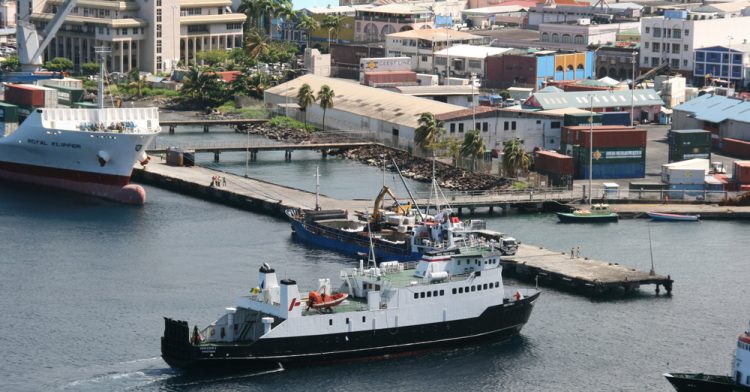The International Monetary Fund (IMF) has accepted the overall need for the modernisation of the Kingstown Port but has forewarned that it will put a strain on current public finances.
The project is being funded by a USD110 million loan from CDB; a GBP25.6 million (about USD32 million) grant from the CDB-administered United Kingdom Infrastructure Fund, and a USD43 million contribution from the Government of St. Vincent and the Grenadines.
People affected by the planned construction will be consulted and compensated. Residents and fisherfolk in Rose Place Community and vendors in Little Tokyo will be offered relocation to safer and more climate resilient areas. Affected persons will also have access to skills training to improve their social and economic situation.
Custom Text
This process has already begun with the removal of vendors from the sea wall at Little Tokyo and the identification of land at Lowman’s Bay to construct 47 single, double and triple room houses.
The IMF said in report released in May this year that:
“The cost of building a new port, however, is quite large for a small economy like St. Vincent and the Grenadines, amounting to nearly 21 percent of GDP. The new port will boost construction demand but also put heavy pressure on public finances. The construction is expected to start in 2021 (originally scheduled for 2020) and end in 2024”.
The existing port was built more than 50 years ago, giving rise to safety concerns and with limited capacity to accommodate increased traffic.
Modernisation of the Kingstown Port is an important component of the Government’s vision for transforming St. Vincent and the Grenadines into a modern, competitive, private-sector led economy.
The Caribbean Development Bank (CDB) said investment in the St. Vincent port modernisation will boost the efficiency of cargo services; revitalise Kingstown; and enhance the business environment while expanding employment opportunities and reducing poverty.
CDB’s regional study (2016) suggests that Kingstown port is below par compared to other ports in the region in terms of productivity, infrastructure quality, and IT capabilities.
While the port project is sizable (US$185 million, 21 percent of 2020-24 average GDP), its growth impact is relatively modest.
According to the IMF, “the main growth channel is through the employment of unskilled labour, and the impact from capital inputs is limited as these will mostly be imported. The long-term growth impact of the port would hinge on the authorities’ efforts to strengthen over St. Vincent and the Grenadines’ competitiveness and foster private sector activity”.
“In the absence of this investment, however, should there be structural failure of the existing port, significant negative economic impacts would ensue”.


2 Comments
Of course the other problem is that the ULP government are famous for not compensating on a timely basis. There are still people in SVG who have not been paid for their properties fifteen years afterwards. People who have had awards from the courts against the government who have not been paid. You can be sure there will be numerous people in this scheme who will either never be paid or put on the waiting list which has no end date.
Did anyone tell the IMF that the SVG ULP government are natural knockers.
Gilbertnuts, are you speaking about the people in the Argyle area who cannot prove ownership of those lands?